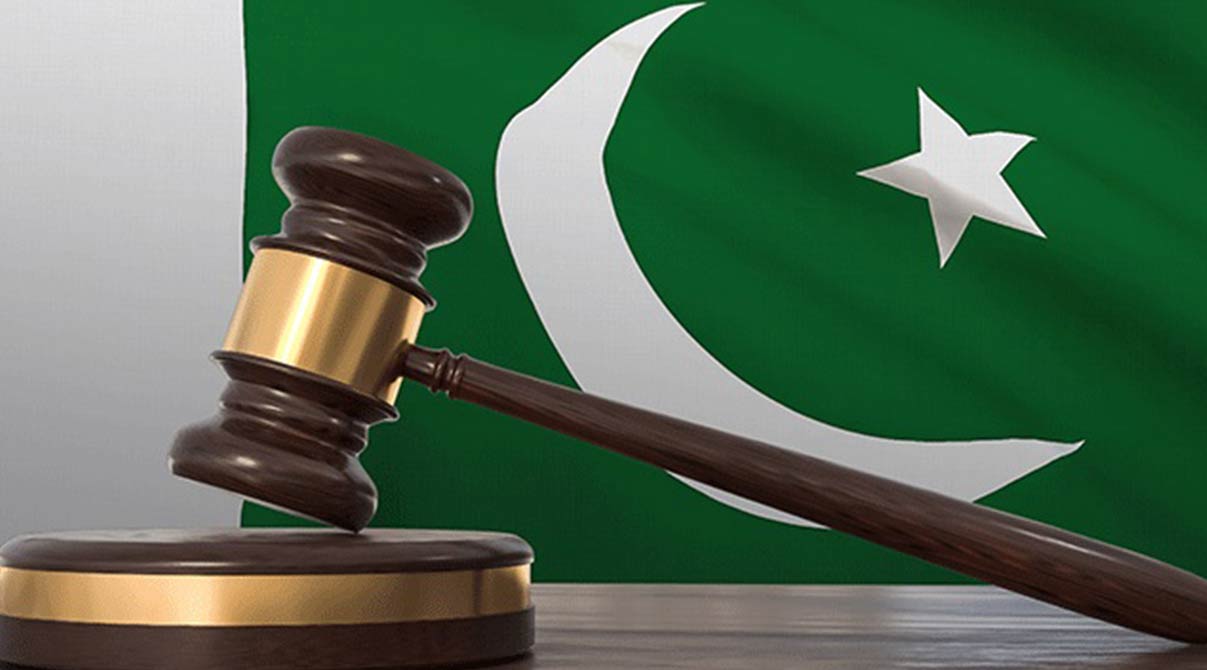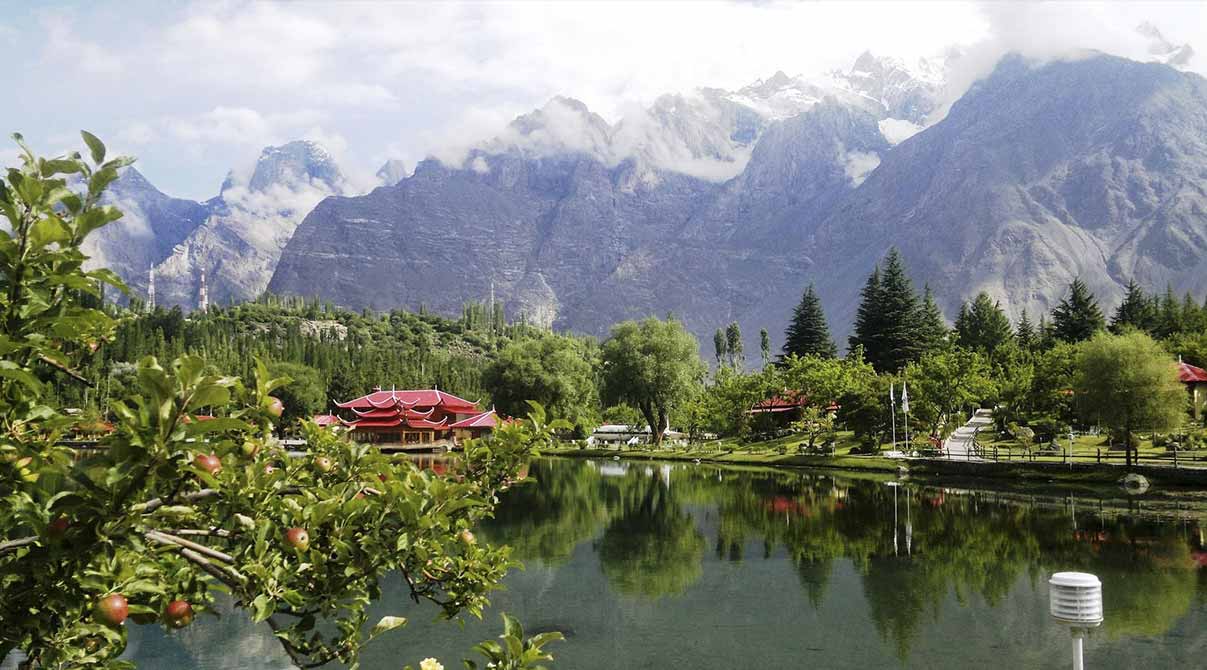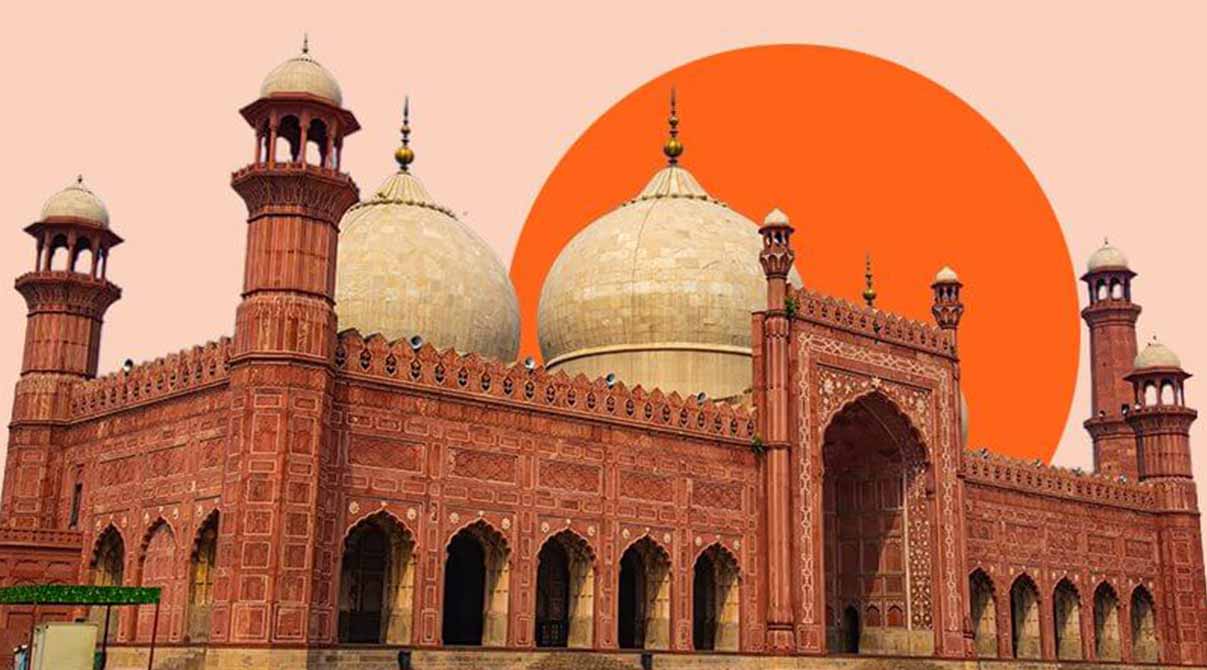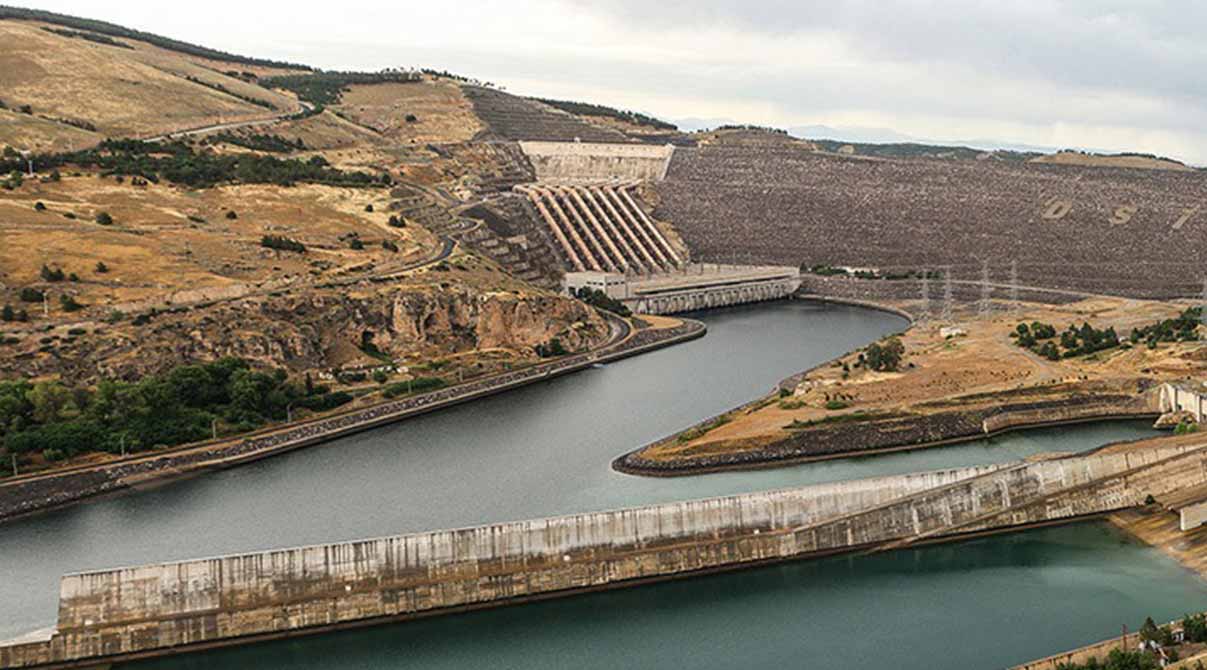Let’s explore the fascinating facts about Pakistan, an interesting and vibrant country with a rich and varied history. Pakistan is located in South Asia and is bordered by India, Afghanistan, Iran, and China. It boasts a population of over 200 million people, making it the world’s sixth most populous nation. Influenced by its surrounding nations for centuries, Pakistan has cultivated an intriguing history and culture. Over time, the country has transformed into a vibrant democracy with a thriving economy. With its diverse range of cultures, climates, religions, and landscapes, Pakistan is a treasure trove of intriguing facts waiting to be discovered.
Pakistan is home to some of the world’s most stunning landscapes. It has the Karakoram mountain range in the north and lush green valleys lined with rivers traversing through them in the south. The country also boasts rich cultural heritage with unique customs, traditions and languages that vary from region to region. From Indus Valley civilization to Mughal Empire, Pakistan offers visitors an immersive experience into its past civilizations and cultures that still exist today. From its incredible landscapes to its unique architectural style, this article will explore some of the most interesting facts about Pakistan.
Geography of Pakistan
The geography of Pakistan is both diverse and beautiful. It consists of a wide range of terrain, ranging from the Hindu Kush Mountains in the north to the Arabian Sea in the south. The country has an area of over 796,096 square kilometers and shares land borders with India, Afghanistan, Iran, and China.
Pakistan is home to five major rivers: Indus River, Jhelum River, Chenab River, Ravi River and Sutlej River. All these rivers originate in the Himalayas before joining into one at Panjnad near Bahawalpur. In addition to these rivers there are many small canals that irrigate agricultural areas along their banks. The western mountains include two major ranges – Karakoram Range and Hindukush Range. These are home to some of the world’s tallest peaks including K2 (8611 meters).
History of Pakistan
Pakistan, located in the Indian subcontinent, has a long and complex history. It is an ancient land that has been home to many powerful empires, religions, and cultures for thousands of years. Since its partition from India in 1947, it has become one of the most populous countries in the world with a population of 231.4 million people.
The first modern society on the region now known as Pakistan was founded by Vedic Aryans around 1500 BC. Buddhism later spread to this area and developed into its own distinct form known as Gandhara Buddhism. It flourished until 500 AD when Hinduism rose to prominence after being brought by traders from India. Islamic rule began when Muhammad bin Qasim took control of Sindh in 712 AD. He then continued with multiple Muslim dynasties ruling for centuries afterwards until British colonization in 1858. The British ruled the area for about 200 years, and finally Pakistan received independence on August 14, 1947.
Pakistan’s Society & Culture
Pakistan is a country of diverse cultures and societies, with various languages and holidays celebrated throughout the year. The main languages spoken in Pakistan include Punjabi, Pashto, Sindhi, Balochi, Urdu, and English. Punjabi is the most widely spoken language in Pakistan with over 60 million native speakers. Urdu is the national language of Pakistan. It is used for official purposes as well as for communication between different ethnic groups.
The holidays celebrated by people in Pakistan are mainly based on religion. Eid al-Fitr marks the end of Ramadan month-long fasting period. While Eid al-Adha celebrates Abraham’s obedience when God commanded him to sacrifice his son Ishmael.
Pakistan’s society is largely conservative and traditional, but also contains elements of modernity due to increased contact with foreign countries. The many ethnic groups that make up Pakistan’s population contribute to its vibrant culture. Pakistani cuisine combines influences from India and Central Asia. Likewise, the music ranges from traditional folk tunes to popular music. It has been highly influenced by western genres such as rock ‘n’ roll.
Related: Top 10 Historical Places of Pakistan
15 Interesting Facts about Pakistan
Pakistan is a country full of culture and history. It has a vast diversity in both people and landscapes, making it an interesting destination to explore. Here are 15 interesting facts about Pakistan that you may not know:
Meaning of Pakistan, Establishment, Power and Beauty
Pakistan is the first and only Muslim country to gain independence based on religion. It became an independent Muslim state on August 14, 1947, in the blessed month of Ramadan. Pakistan is one of the only countries to gain independence based on religion. On August 14, 1947, in the blessed month of Ramadan, Pakistan was declared an independent Muslim state. This momentous event marks a defining moment in history for Muslim people across the world.
The name Pakistan means “The Land of Pure” in Persian and Urdu. This phrase encapsulates the nation’s value system based upon its founding principles of justice, piety, and service to humanity. This sense of purity also resonates within Pakistan’s people as well. Its citizens are known for their hospitality, generosity, and welcoming nature towards visitors. As a nation founded on Islamic principles and values, Pakistanis take great pride in preserving the sanctity of their lands.
Pakistan has been a nuclear power since 1998 and has been thriving ever since. It is the first and only Muslim country in the world to possess nuclear technology. Its status as a nuclear power reflects the political power and stability that this country enjoys today. It’s something that is much needed in a region rife with conflict.
Moreover, the country’s capital, Islamabad, has been ranked as the second most beautiful capital city in the world. Its picturesque landscape consists of lush greenery and majestic views. Visitors to Islamabad are greeted with a vibrant culture that reflects its rich history, combined with a modern urban lifestyle. The city is home to some magnificent monuments and architectural wonders.
The National Anthem of Pakistan
According to a survey, Pakistan’s national anthem is one of the most popular national anthems in the world. It is one of the most majestic, stirring national anthems. It’s a source of pride and patriotism for many citizens who feel connected to the song’s message. The beauty of this 80-second-long piece lies in its complexity. It was composed by Ahmad G Chagla in 1949 with lyrics written by Hafeez Jalandhari. Thus, it’s relatively young compared to other anthems around the globe.
The tune itself expresses feelings of passion and devotion. It carries cultural significance, given that Pakistan has been through numerous struggles since its formation as a nation-state in 1947. The music evokes feelings of strength and resilience. These are essential traits for any citizen living in today’s interconnected global community.
Home to the Oldest Civilizations in History
Pakistan is home to some of the oldest civilizations in history. The earliest civilization, Mehrgarh, dates back to 6000 B.C. Not only did Mehrgarh lay the foundation for Pakistan’s ancient civilizations. But it provided a basis for other cultures across South Asia as well. The Indus Valley Civilization, which flourished from 3300-1300 BC, was one of the first large urbanized settlements in South Asia. It extended throughout much of modern-day Pakistan.
Related: Top 10 Internationally Acclaimed Pakistani Writers
Other ancient civilizations that flourished in what is now Pakistan were Mohenjo-Daro and Harrappa which both date back to 2500 B.C. These cities featured impressive structures with elaborate brickwork and grand public baths. They also had large granaries that helped store food during times of famine. Following this was the Gandhara civilization which existed from 1500-500 BC. It was centered in Taxila, an ancient city located northwest of Islamabad. These sites have since been inducted into UNESCO’s World Heritage Site.
Agriculture and Cultivation
Pakistan is a country known for its natural beauty and rich cultural heritage. But it also has some unique geographical features that make it an interesting place to visit. With 25% of the total land under agricultural cultivation, Pakistan is one of the world’s leading producers of food. Its vast network of canals makes up the world’s largest canal-based irrigation system. Thus, it enables farmers to irrigate their fields with ease. This system is responsible for providing over 40% of Pakistan’s total water supply.
Apart from being home to the world’s largest canal-based irrigation system. Pakistan is home to one of the world’s most unique and fertile deserts – the Tharparkar desert. Spread across an area of approximately 200,000 sq km. Thar desert is situated in Pakistan’s southeastern Sindh province and extends into India. It is the only fertile desert in the world. It has been a source of sustenance for many inhabitants who live there.
The fertility of this arid land comes from its past history as part of an ancient river system that used to flow through it before it became a vast sandy expanse. It supports a wide variety of flora and fauna due to its unique geographical features such as sand dunes, salt flats, dry streams and seasonal lakes.
The Natural Structures – Dams, Glaciers, and Salt Mine
The Tarbela Dam, located in the Haripur District of Pakistan’s Khyber Pakhtunkhwa Province is currently the largest earth-filled dam in the world. It is also the fifth largest dam by structural volume. Constructed between 1968 and 1976, it stands at an impressive 139 meters in height and 3,478 meters in length. Its primary purpose is to provide hydroelectric power to much of the surrounding area.
The Biafo Glacier in Pakistan is the longest glacial system in the world, located outside of the polar regions. Spanning over 63 km in length, it connects with the Hispar Glacier at Hispar La (5128 m), forming the Hispar-Biafo Glacier System. It has become an important tourist destination in Pakistan. It offers hikers a unique opportunity to experience its natural beauty. The Biafo Glacier is also known for its wildlife. It functions as a home to several species of animals, such as Ibex, the Markhor, Himalayan brown bears, as well as snow leopards.
The Khewra Salt Mine in Pakistan is the second largest and oldest salt mine in the world. Located in the foothills of the Salt Range hill system, it is believed to have been discovered by Alexander the Great’s troops nearly 2000 years ago. Since then, it has been an important source for industrial-grade salt for centuries. Today, visitors from all around the world come to see this incredible feat of nature and experience a close look at its many rock formations, sculptures made from salt crystals shaped through centuries of erosion, and even explore its tunnels that lead deep into mountain passageways with walls made of gleaming white salt.
Blind Dolphin
Pakistan is home to some of the world’s rarest species and one of them is the Indus River blind dolphin. The species was declared as the second most endangered freshwater dolphin species by the IUCN. It is estimated that only 2000 of these dolphins remain in the river, making it a critically endangered species.
Owing to their poor vision, Susu dolphins are generally blind. They hunt by making ultrasonic noises and using the echo-location mechanism. They are typically seen isolated or in tiny groups.
Related: Pakistani Scientists Develop Low-cost Anti-bacterial Fabric
Man-made Forests and Grand Highways
Pakistan is a country of grandeur and natural beauty. From the Changa Manga forest, the world’s largest man-made forest, to the highest paved international road – The Karakoram Highway, it offers some of nature’s best gifts.
The Changa Manga Forest is located in Punjab province and was planted in 1866 by two brothers who dedicated their life to conservation. Spanning over 75 square kilometers, this vast area is home to hundreds of species of birds and animals as well as various plants and trees. The Karakoram Highway is an 810 mile long highway connecting Pakistan with China along an ancient Silk Road route. This winding road stretches through mountains and valleys crossing four mountain passes at elevations above 15000 feet – making it one of the highest paved roads in the world!
Deep Sea Port in Gawadar
Pakistan’s Gwadar port is the largest deep sea port in the world. Spanning over 64,000 square meters and reaching depths of 14 meters, this impressive structure offers a gateway to the Arabian Sea. The port serves both commercial and military purposes, providing strategic advantages to the country by helping promote economic development while also acting as an important security point for Pakistan’s coastal borders. Connecting the Arabian Sea with Central Asia and Pakistan itself, this port has been designed to become a global shipping hub for South Asia.
The strategic location of Gwadar Port puts it in prime position to become a major economic hub for trade between China, the Middle East and West Asia. With its constantly deepening channels, the port can accommodate some of the world’s largest cargo vessels or tankers – making it one of the most important ports in South Asia. A free-trade area has also been established at Gwadar Port as part of ongoing efforts to facilitate business opportunities, interesting facts about Pakistan and promote investment within Pakistan.
Ansoo Lake
Ansoo Lake, also known as “teardrop lake,” exists in the Kaghan Valley in the Mansehra District in the Pakistani province of Khyber Pakhtunkhwa. The lake has a tear-shaped appearance. The lake also resembles an eyebrowed human eye, which is more obvious around the summer as the ice melts. An island in the middle of the lake also replicates an iris. The lake is an important tourist site where many visitors come to see the beautiful geometry of the lake resembling a real human eye.
Largest Necropolis
Makli Hills, located in Thatta, Pakistan, is home to a staggering half a million tombs and graves. The site has been declared a UNESCO World Heritage Site and is known as the largest necropolis in the world. It is believed to be around 500 years old and stands out because of its unique architecture which includes several shrines dedicated to Sufi saints.
The history behind Makli Hill dates back to the 14th century when it was founded by the rulers of Thatta. Many graves belong to royalty while some represent famous personalities who have contributed to art, culture and science across different time periods. This site serves as an important reminder of the past as it provides insight into regional cultures, beliefs and rituals that are still practiced today. Visitors can explore this area for hours marveling at its rich history and stunning monuments that display beautiful Islamic art from centuries ago.
Largest Single Dome Mosque
The Masjid e Tooba in Karachi, Sindh, Pakistan is the largest single dome mosque in the world. It is also known as the “Gol Masjid” for this same reason. This majestic structure stands at an impressive 212 feet in diameter and stands 51.48 feet tall. It is truly a sight to behold and can be seen from miles away. The most remarkable feature of this domed mosque is that it does not have any central pillars supporting it, making it even more awe-inspiring than its contemporaries.
Constructed with white marble, this grand mosque was opened for prayer on May 29th 1969 by Muhammad Mian Bashir Ahmed Shiekh who had funded its construction himself.
Related: Popular Places in Islamabad That Are a Must Visit
A Country of Intelligent and Genius People
Pakistan has been ranked among the top countries in terms of intelligence. According to a report released by the Institute of European Business Administration (IEBA), Pakistan is ranked fourth in the world for having some of the most intelligent people.
The study was based on 125 countries, and it found that Pakistan had more than half its population scoring higher than average on cognitive problem solving tests. This means that many Pakistani individuals are able to think abstractly and have a greater capacity for understanding complex problems. What’s more, Pakistan has the seventh-largest collection of scientists and engineers in the world.
Pakistan boasts many highly intelligent and talented individuals like Mohammed Ilyas, who became the youngest civil judge in the world after passing the exam at only 20 years and 9 months of age; Jahangir Khan, world’s number 1 squash player who holds the Guinness World Records for the longest winning streak by any professional athlete (winning 555 consecutive matches); Air Commodore MM Alam, who holds the world record for shooting five planes in less than a minute.
Football Manufacturing Industry
The city of Sialkot, located in the Punjab region of Pakistan, is perhaps most well-known for its production of handsewn footballs. Every year, this ancient industrial town produces around 40 to 60 million footballs – an astonishing 50 to 70 percent of the world’s total. This makes it not just the largest maker of these sporting goods but also one of the most important centers for leather and textile manufacturing in South Asia.
Sialkot has been making sports equipment since 1852 and has become a major hub for international brands over time. It houses more than 200 factories that employ thousands of workers from all around the country who are dedicated to crafting top-notch footballs with great precision.
World’s Highest ATM
At 16,007 feet above sea level, the National Bank of Pakistan has installed the world’s highest automatic teller machine (ATM) at the Pak-China border. The ATM is part of a larger initiative to provide banking services across all regions of Pakistan. To make it accessible for both locals and tourists, the bank also equipped it with a built-in oxygen system to protect against altitude sickness.
The installation process of the ATM was a challenge due to its remote location and high altitude. It took months of planning and coordination between the bank team and local authorities to ensure that all necessary safety measures were taken in order to make this project possible. The National Bank of Pakistan is proud to have achieved this feat, which could only be made possible by dedicated team work and determination.
Edhi Ambulance Network
Pakistan has the world’s largest ambulance network, and it’s all thanks to the Edhi Foundation. Founded in 1951 by Abdul Sattar Edhi, a renowned Pakistani philanthropist and social activist, the foundation is now listed in the Guinness Book of World Records as having the largest ambulance network in the world. The Edhi Foundation operates a fleet of more than 1800 ambulances across Pakistan, providing free medical assistance to people who cannot afford it.
The foundation also runs 24-hour call centers that provide emergency medical services to anyone who needs them. This includes transporting patients from rural areas to larger hospitals for specialized care. In addition, they offer transport for pregnant women in labor and provide basic first aid training for drivers of their ambulances.
The Bottom Line
In conclusion, Pakistan is a fascinating country with a unique culture, language, and history. It has faced numerous challenges over the years yet continues to grow into its own as it works to build a stronger economy and promote peace in the region. From its vibrant cities to stunning natural landscapes, Pakistan is certainly a country worth exploring. Pakistan has been home to an array of influential figures in politics, literature and art throughout history, making it an even more intriguing place to learn about.




